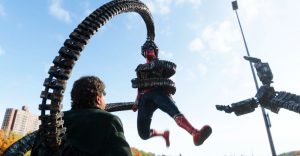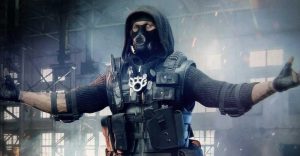Star Trek: Why The Original Enterprise Was Destroyed

The Starship Enterprise was destroyed in the Star Trek movies starring the cast of The Original Series, but the plan to move Admiral James T. Kirk (William Shatner) and his crew to the U.S.S. Excelsior was aborted. Harve Bennett, the producer of the Star Trek movies, wanted to transfer the beloved cast to a newer ship of his own creation, the U.S.S. Excelsior, but Bennett had to scrap this idea thanks to a campaign led by Star Trek‘s creator Gene Roddenberry himself.
Written by Bennett and directed by Leonard Nimoy, 1984’s Star Trek III: The Search for Spock was a direct sequel to 1982’s Star Trek II: The Wrath of Khan. The title of the third Star Trek movie gives it all away: Kirk and his loyal crew committed insurrection and stole the Starship Enterprise in order to find Spock’s body on the Genesis planet. Their goal was to bring him to Vulcan to reunite him with his katra — Spock’s Vulcan soul — which he transferred to Dr. Leonard McCoy (DeForrest Kelley) before his death. However, a battalion of Klingons led by Kruge (Christopher Lloyd) wanted the secrets of Genesis, which the warrior race coveted as a doomsday weapon. The Enterprise, which was running on automation, wasn’t prepared to fight a Klingon Bird-of-Prey and the villainous race raided Kirk’s ship. To keep the Enterprise from falling into Klingon hands, Kirk activated the ship’s auto-destruct sequence. After beaming to the Genesis planet, Kirk lamented, “My God, Bones, what have I done?” as the Enterprise exploded, killing the Klingons aboard and crashing onto the planet’s surface like a fireball.
To Bennett, blowing up the famed starship was no big deal: His experience as a military man taught him not to be sentimental about your vehicles; you just take another. So, in the producer’s mindset, it was logical for Kirk and his crew to simply get a new ship. As an added bonus, the Excelsior was Harve Bennett’s creation, which would let him place his own stamp on the future Star Trek movies. However, Bennett underestimated two important factors: Gene Roddenberry and the Star Trek fandom. After Star Trek: The Motion Picture‘s critical failure, Roddenberry was demoted to a mere executive consultant on the rest of the Star Trek movies but he balked at Bennett’s plan to scuttle the Enterprise, citing that the fans would never accept it — and he was right. Bennett didn’t truly understand how sentimental fans were about the Enterprise and that the starship was regarded as a character as just beloved as Kirk, Spock, McCoy, and the others.

However, Roddenberry went behind Bennett’s back and leaked the info that Star Trek III was going to destroy the Enterprise to various fanzines. Roddenberry got the results he wanted from the expected fan uproar and Paramount got cold feet about Bennett’s idea of moving Kirk to the Excelsior. So, the Enterprise was still destroyed in Star Trek III and it was treated as the major character death of the film. Additionally, the Excelsior was made to look foolish after Scotty (James Doohan) sabotaged its transwarp drive. There was no Enterprise in Star Trek IV until the end: Admiral Kirk’s reward for saving Earth was being demoted back to Captain (the rank he wanted all along) and to be placed in command of his own ship, which was an identical vessel to the one he lost, dubbed the Enterprise-A. Happily, Kirk and the fans got the Enterprise back.
The Excelsior remained in Star Trek canon and played a major role in Star Trek VI: The Undiscovered Country, where it was commanded by Captain Hikaru Sulu (George Takei). The Excelsior-class starships then became widely used in Star Trek: The Next Generation and the other spinoff series. In addition, the Enterprise-B launched at the start of Star Trek Generations was an Excelsior-class starship as well. But thanks to Roddenberry’s sabotage of Bennett’s plan, Captain Kirk never commanded any other kind of Starfleet ship besides the familiar, Constitution-class U.S.S. Enterprise in any Star Trek movie or TV series.
About The Author

















